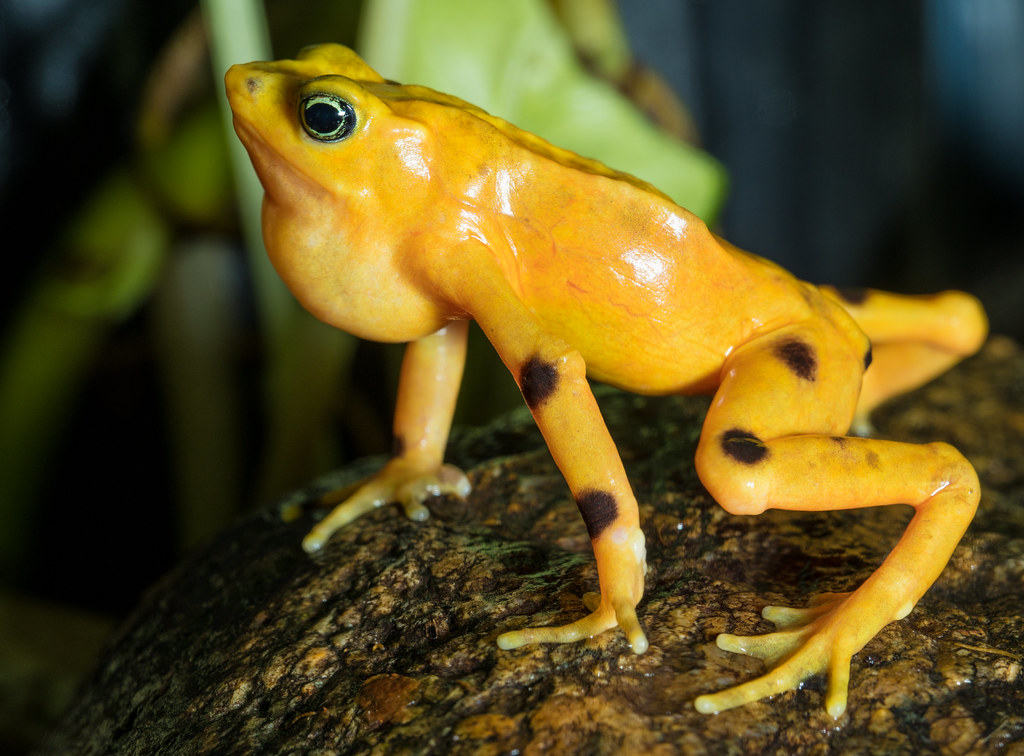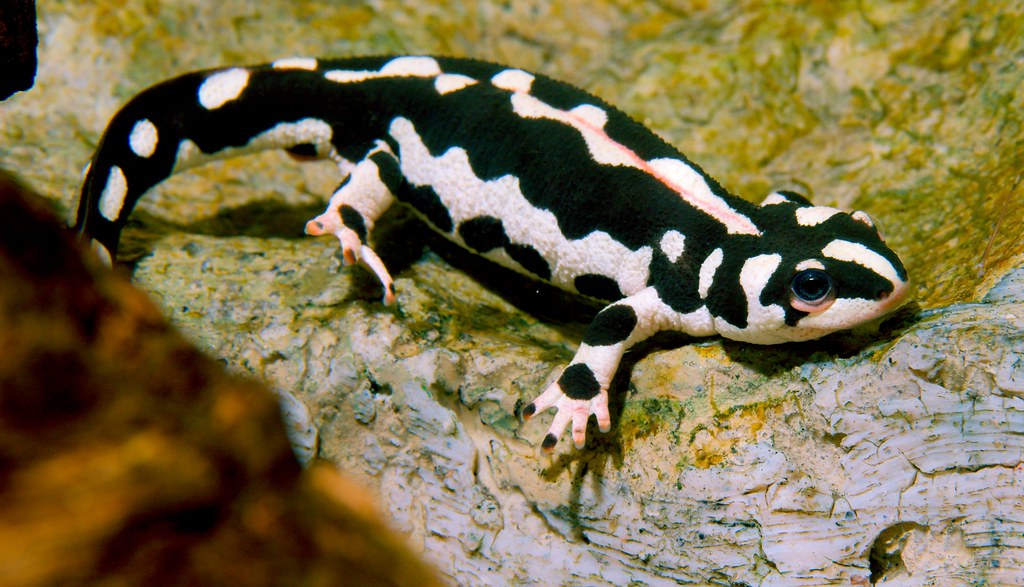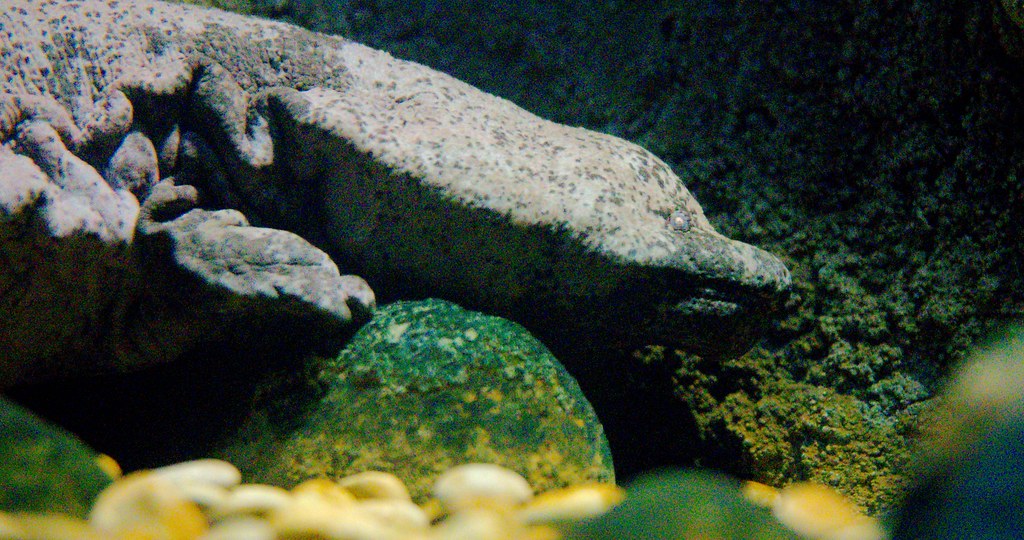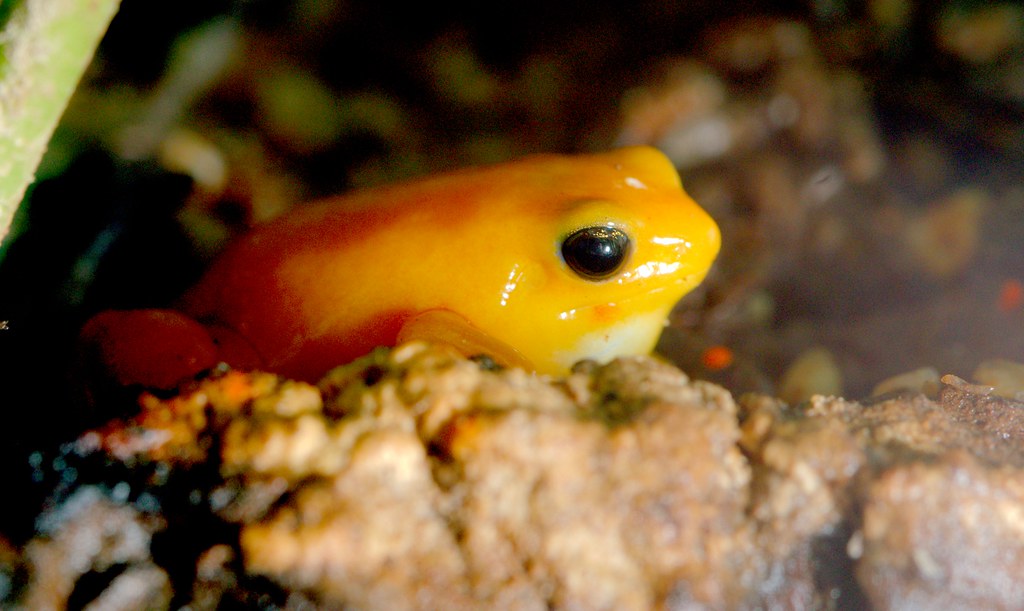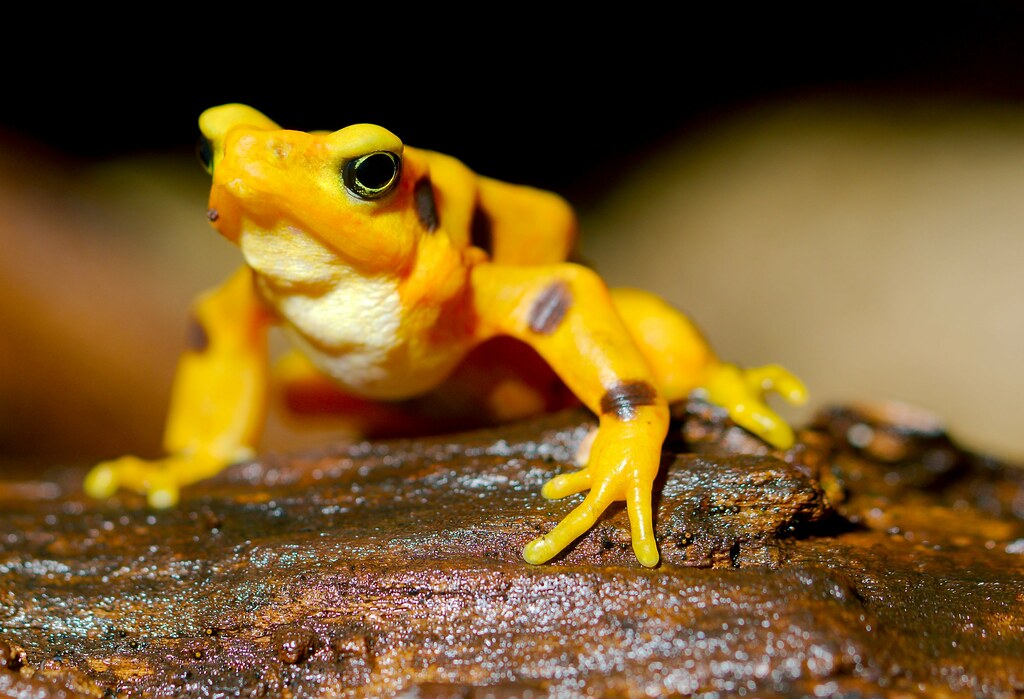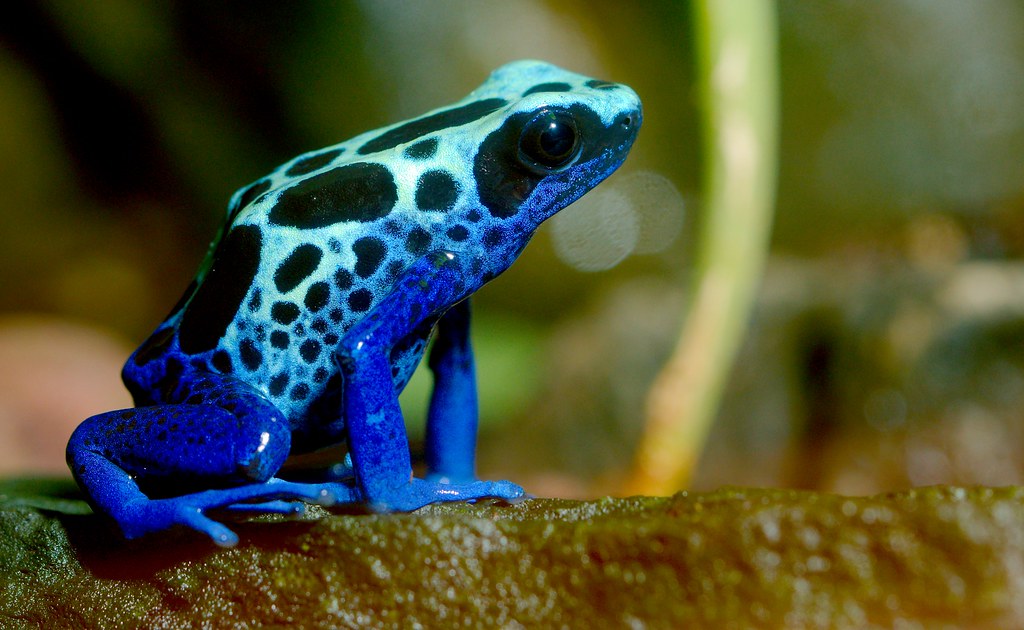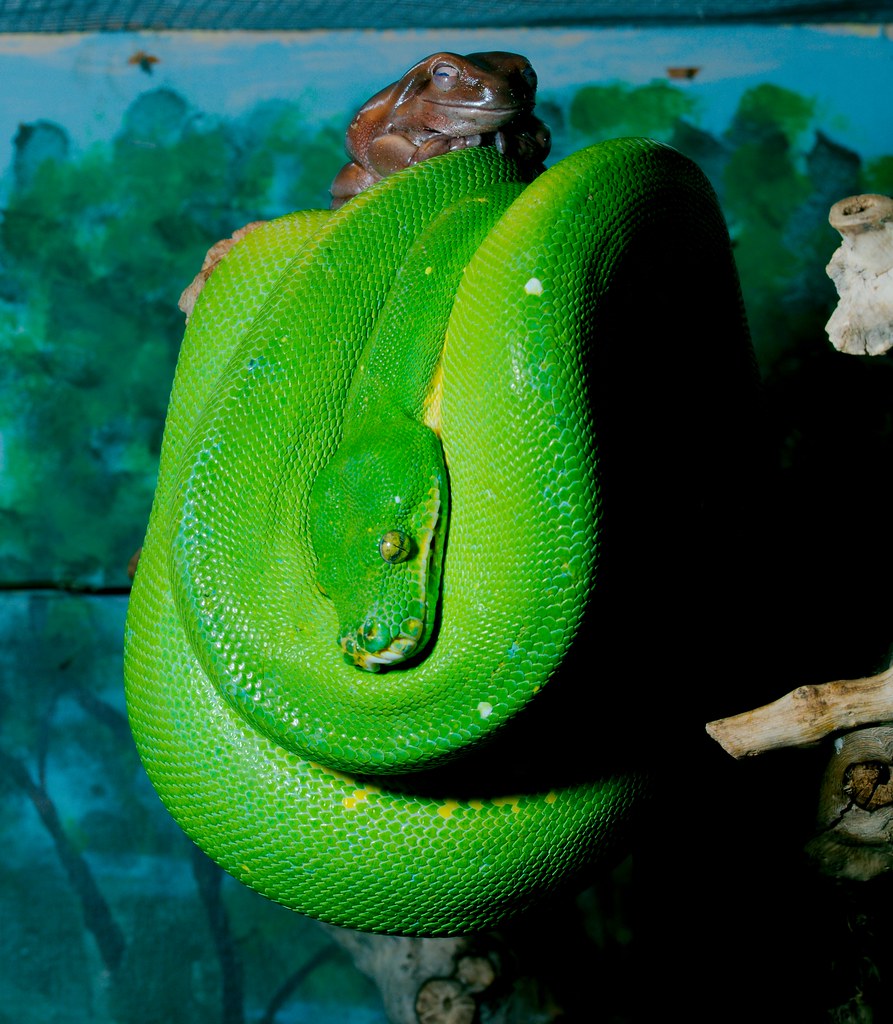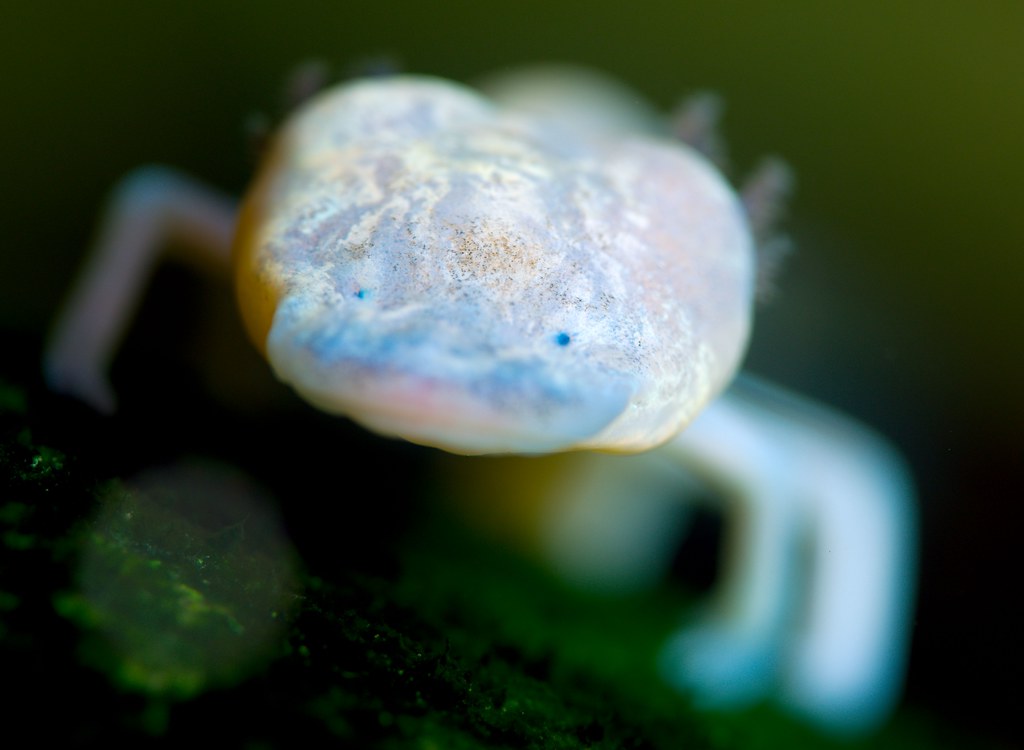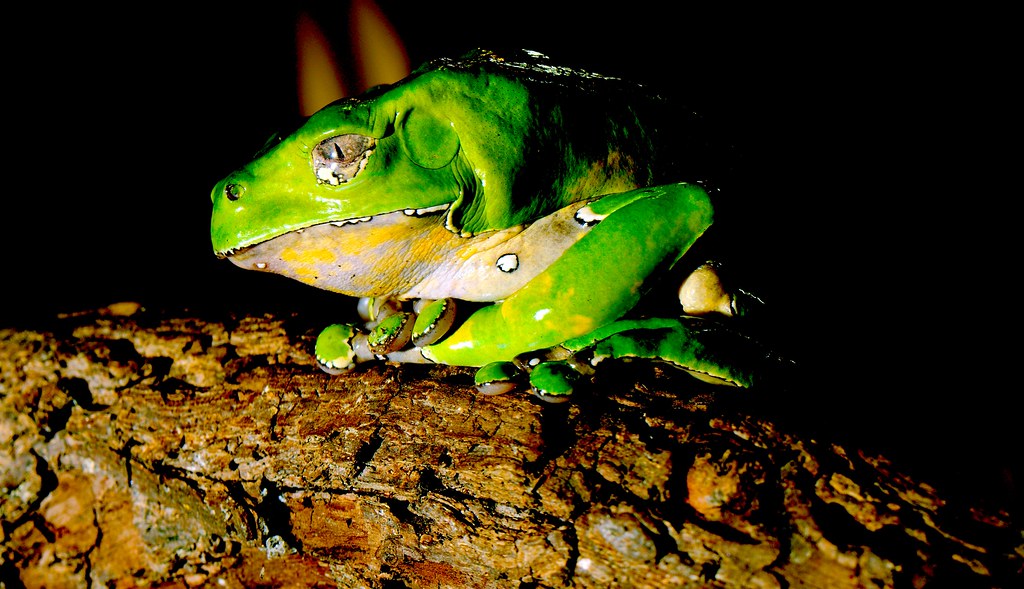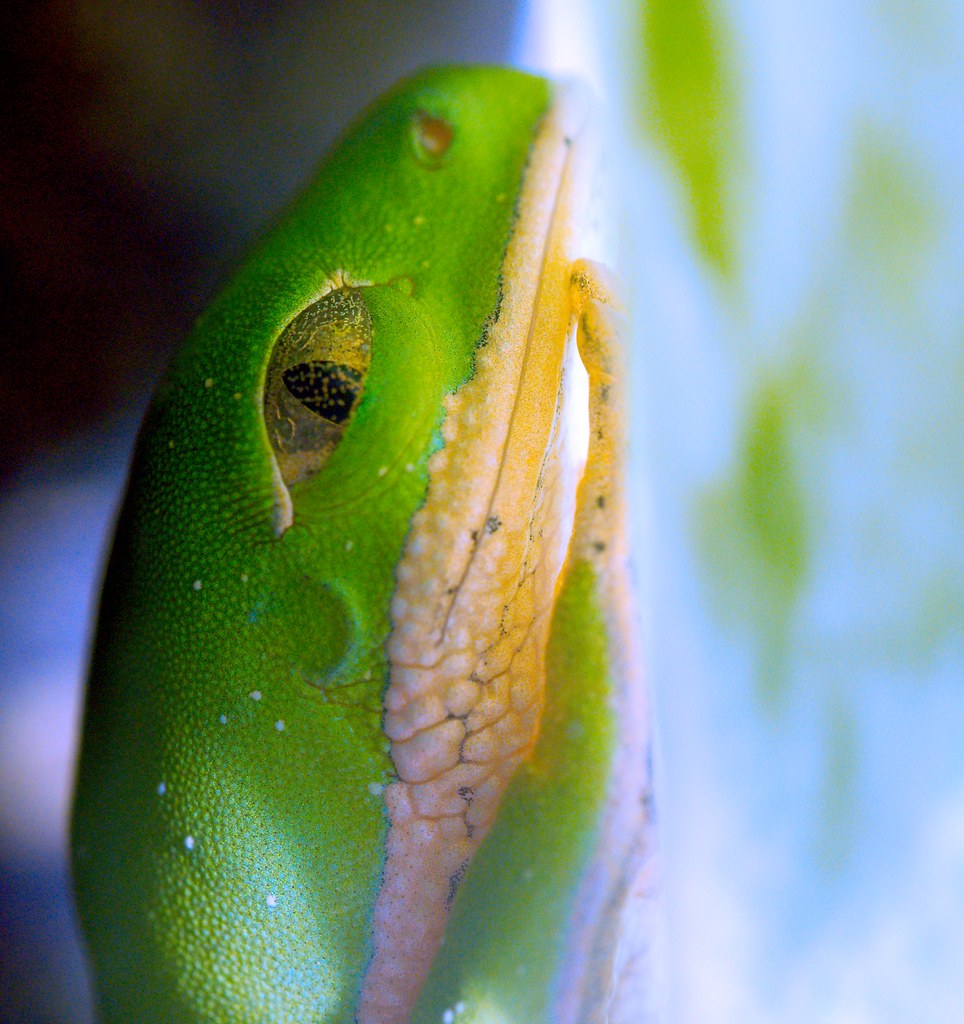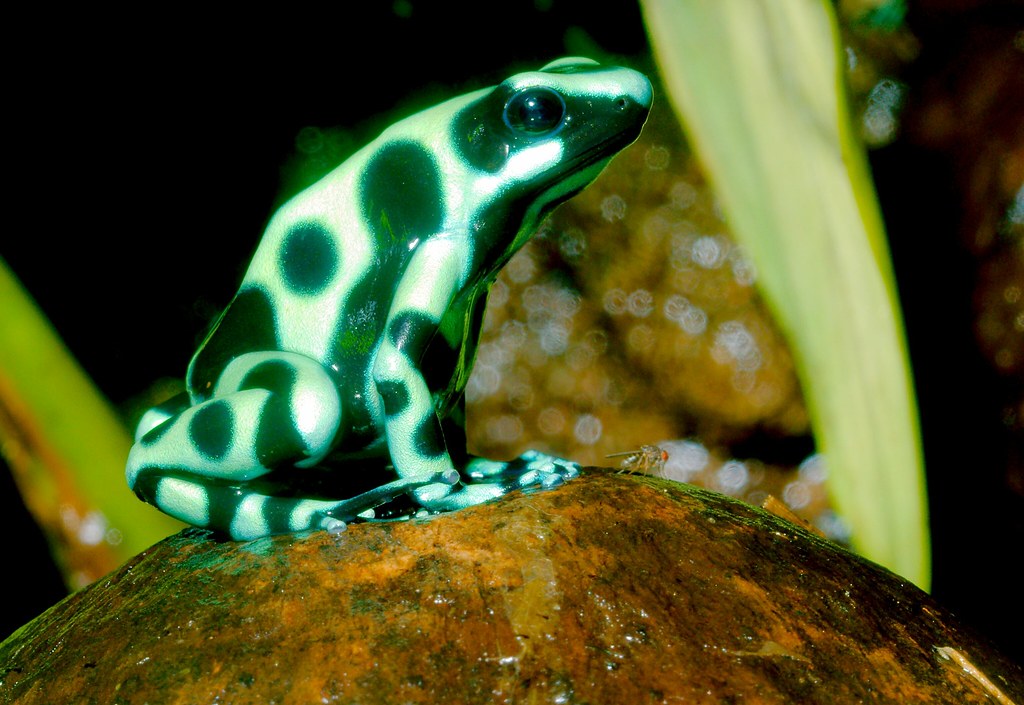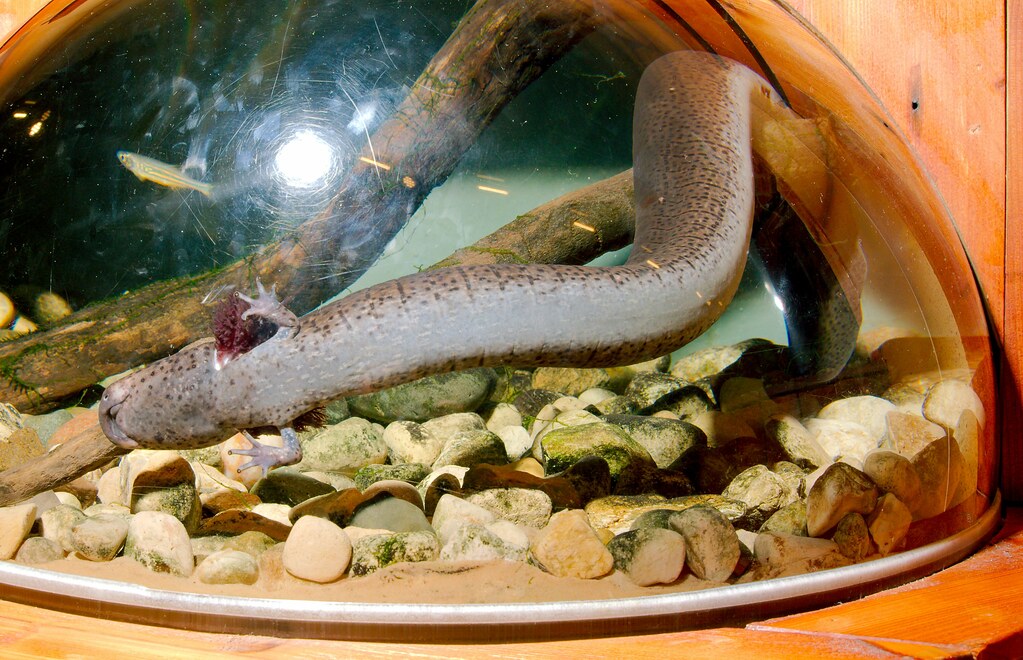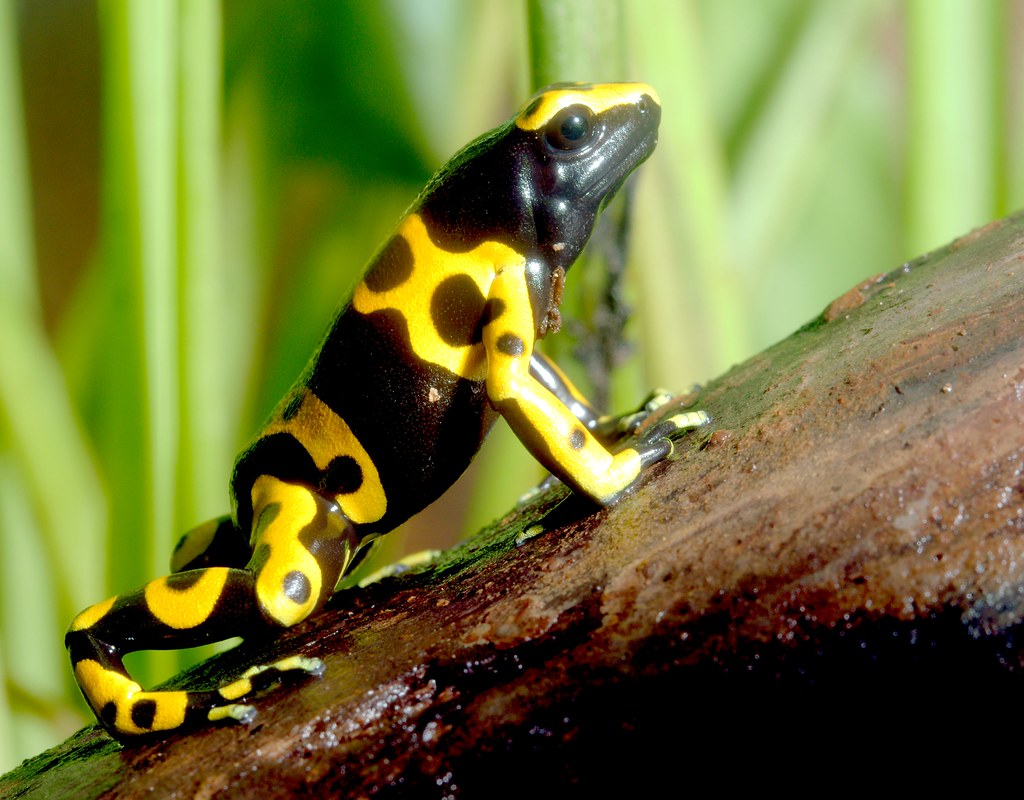I’m pretty sure that if the glass hadn’t been there, she would have pinched my cheek, told me how much I’d grown, and offered me a penny candy.
Category Archives: Amphiban
Panamanian Golden Frog
Sambava Tomato Frog
Kaiser Newt
Chinese Giant Salamander
Of course, when I’m there with a half-working system, that’s the time the Chinese giant salamander decides to pose. Good thing the Sony system does well in low light.
For those that track such things, this is a 100% crop at ISO 3200, hand-held at 1/60th of a second.
The salamander was about 15 feet* away. It would have looked a lot better on my Nikon.
* 4.5ish meters for those who use a decent** measurement system
** About 18.3 cham ams, for those who don’t
African Bullfrog
Golden Mantella
This frog is ticked off that he wasn’t consulted on the directorial choices of the latest movie in his favorite series. How dare they make make creative character choices while working within variants of the same mythic narrative structure as all of the other movies, especially after how lambasted they were for the previous film being so duplicative of others in the series? And the new aliens just piss him off. It’s a completely different galaxy for crying out loud. Everyone knows that galaxies are populated by exactly 153 alien races. Mostly, though, he is upset that $23 (including a medium size drink) doesn’t give him the right to dictate the direction of a billion dollar franchise.
He’s going to see the movie two more times, just to verify that he’s well and truly angry, and then it’s off to Reddit!
Kaiser Newt
This salamander is considered critically endangered because it lives in only four streams in the southern Zagros Mountains of Iran.
An interesting thing about this listing is that, like some critically endangered species, it thrives in captivity and there are a number of these guys in private hands. Even though they breed well in captivity, they should still be considered critically endangered because the genetic distribution of the captive population may not be as robust as that in the wild, and counting species health based solely on numbers can not be considered indicative of viability.
Panamanian Golden Frog
This animal is extremely poisonous, producing, among other things, zetekitoxin AB. This is a tetrodotoxin compound that blocks voltage-dependent sodium channels. You’d think, from that name, that if you accidentally touched one of these guy, you could treat it by eating salt and increasing your body voltage. This is not true. Were you to do this, all you would do is confuse the medical examiner as to whether you were poisoned, electrocuted, or choked on a pretzel.
Kihansi Spray Toad
This is the other animal I went to the Bronx zoo to see. This is the Kihansi spray toad, native to a an area at the base of the Kihansi River waterfall in Tanzania. Their entire habitat was less than 0.0077 square miles.
In 1999, Tanzania built a dam across the Kihansi, which reduced the amount of water going through the waterfall, which reduced the overall amount of spray that created a moist enough environment for them. A sprinkler system was added to help keep them alive, but in 2003, the system broke at the same time that the chytrid fungus showed up in that area and the dam was flushed, which released pesticides into their environment. In 2004, they became extinct in the wild. We are fortunate that they breed well in captivity.
Today, the Bronx zoo is one of the only places on the planet where you can see them. The others are: the Toledo Zoo, the Chattanooga Zoo, the Detroit Zoo and the Henry Doorly Zoo in Omaha.
Poison Dart Frog
Green Tree Python and Frog
Texas Blind Salamander
Giant Leaf Frog
Texas Blind Salamander
The Texas blind salamander is native to Texas, but that’s not all.
More specifically, it is native to the Edwards aquifer in Texas.
More specifically, it is native to the part of the Edwards aquifer in Hays County, Texas.
More specifically, it is native to the part of the Edwards aquifer in the city of San Marcos in Hays County, Texas.
More specifically, it is native to the part of the San Marcos Pool of the Edwards aquifer in the city of San Marcos in Hays County, Texas.
And that’s the problem with certain rare species. The conditions they require for survival are so specific to their needs (having evolved to be a precise fit), that even small changes can push them straight to extinction. Due to how Mexico’s use of water has changed, this is happening with the axolotl (also living in a very specific pool), but it also happens to island species. Sometimes the change is due to something else establishing itself on the island – rats, snakes, pigs, rabbits, frogs/toads, humans, etc. Increasingly, though, it is due to climate change.
We like to think that as the climate changes, animals will just move, but that’s not an option for everyone. Animals can become trapped in “survival pockets”, like actual islands, the tops of mountains, areas of land surrounded by mountains, peninsulas, etc. As the planet warms, survival zones shrink and species are condensed into these smaller pockets, competing for fewer and fewer resources.
Eventually, there simply won’t be enough resources and the species will adapt or die out. There’s nothing wrong this, as this is the way the world has always been. The different is that, today, change is coming faster than ever before … and adaptation takes time. This is why the sixth extinction is such a big deal. As the planet changes, we will be seeing increasing losses of biodiversity in all sorts of places. Sure, we can survive some of them, but the web of interactions between species is amazingly complex and we have no way to know which losses will hurt our own species.
I am not so naive as to think that everyone could share the interest I have in rare species. However, I am constantly surprised at how few people prioritize long term survival of our own species over short term financial gain. Maybe the species that supplants our own will be somewhat wiser.

